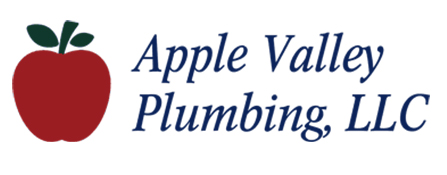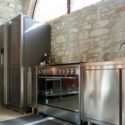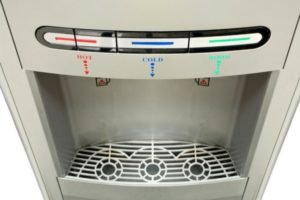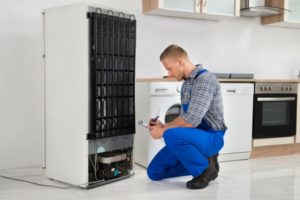Tips to Help You be Careful With Your Fall Cooking Habits
Fall means that the holidays are coming. Thanksgiving is the start of a busy and full season with lots of family and friends. One of the best parts of the holidays is getting to have many big meals with loved ones.
However, special meals mean lots of time in the kitchen and lots of time in the kitchen can mean problems for your pipes. Today we’ll talk about some easy things you can do to help protect your kitchen plumbing this fall and to avoid having plumbing problems during the busy holiday season.
Remember Grease Traps
 When you’re busy cooking and dealing with lots of pots and pans, more often than not some grease and oil get down the drain. You do your best to avoid it, but it’s hard when you’re moving lots of dishes around and making a fancy meal.
When you’re busy cooking and dealing with lots of pots and pans, more often than not some grease and oil get down the drain. You do your best to avoid it, but it’s hard when you’re moving lots of dishes around and making a fancy meal.
Protect your kitchen plumbing from this inevitability by using grease traps. Grease traps go in your drain or waste pipe and keep grease from going through your plumbing system and into the sewer system.
This simple trap can avoid troublesome blockages and foul odors. Plus, it will give you peace of mind knowing that even in the most chaotic cooking days your pipes are protected.
Hot Water Every Week
 Keeping your pipes clean is one of the best ways to protect them and to avoid having blockages or issues. An easy way that you can regularly work to keep your pipes clean is by pouring boiling water down the drain each week.
Keeping your pipes clean is one of the best ways to protect them and to avoid having blockages or issues. An easy way that you can regularly work to keep your pipes clean is by pouring boiling water down the drain each week.
Once a week, fill a tea kettle with boiling water and, once the drain is clear, pour the boiling water down your sink. This will clear small blockages and buildups and will help to keep your pipes clean. It’s a small thing to add to the routine, but it can make a big difference for your pipes.
Garbage Disposal Reminders
During busy seasons, there can be a major strain on your disposal. This can lead to problems both for the disposal and for your pipes. To avoid a plumbing emergency, keep a few garbage disposal dos and don’ts in mind this fall:
-
 Only put small food scraps down the garbage disposal; remember that it is not a trash can.
Only put small food scraps down the garbage disposal; remember that it is not a trash can.- Never put grease or fats in the disposal.
- Always use cold (not hot) water when running the garbage disposal.
- Never put coffee grounds or starchy foods down the sink - while these might not hurt the disposal, they can cause clogs in your pipes.
- Be cautious about fibrous foods (i.e., banana peels, celery, eggshells) as they can wrap around the disposal and cause it to stall.
You don’t want your drain to clog or your disposal to go out in the midst of cooking a big meal, so keep these tips in mind to help ensure that your disposal and kitchen plumbing are working as they should. We hope these tips will help you to protect your kitchen plumbing this fall and that you have a wonderful fall season filled with many great meals!



 Think about it: if a licensed bathroom or
Think about it: if a licensed bathroom or  There could be substantial financial costs for ignoring the permit process, both in the present and future. If you want to put your home up for sale at some point, the appraisal will take into consideration whether or not any unauthorized renovations were done.
There could be substantial financial costs for ignoring the permit process, both in the present and future. If you want to put your home up for sale at some point, the appraisal will take into consideration whether or not any unauthorized renovations were done. Although applying for permits can be time-consuming and sometimes comes with a fee, there's a good reason why they exist.
Although applying for permits can be time-consuming and sometimes comes with a fee, there's a good reason why they exist. 
 It is inevitable that some food scraps and other debris will fall into your kitchen sink when you are cleaning your dishes and tidying your kitchen.
It is inevitable that some food scraps and other debris will fall into your kitchen sink when you are cleaning your dishes and tidying your kitchen. Chances are that you scrape your dishes into the garbage can and then walk across your kitchen to your sink to rinse the dishes before you put them in the dishwasher or wash them by hand.
Chances are that you scrape your dishes into the garbage can and then walk across your kitchen to your sink to rinse the dishes before you put them in the dishwasher or wash them by hand. With the food debris and scraps that gather in your sink, you will inevitably get bad smells in your kitchen as that food begins to decompose. You can try to freshen the drains with baking soda and vinegar, but that isn’t always effective.
With the food debris and scraps that gather in your sink, you will inevitably get bad smells in your kitchen as that food begins to decompose. You can try to freshen the drains with baking soda and vinegar, but that isn’t always effective.
 Off the bat, you need to find the nearest cold-water supply. Kitchens normally have these under the sink.
Off the bat, you need to find the nearest cold-water supply. Kitchens normally have these under the sink. Installing the Ice Maker
Installing the Ice Maker If you're confused about kitchen plumbing, don't worry; you wouldn't be the first person. Asking for professional help when installing a new appliance such as a fridge can actually be beneficial.
If you're confused about kitchen plumbing, don't worry; you wouldn't be the first person. Asking for professional help when installing a new appliance such as a fridge can actually be beneficial.